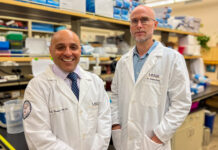
Mercer University School of Engineering will start incorporating sustainability concepts in two freshman and sophomore engineering classes this fall, teaching students to consider the social, economic and environmental impacts of their work on the planet and people’s lives.
“It is looking at things from a broader perspective, and it’s not just about the technical aspect of engineering, but it’s looking at how it impacts society and the environment,” said Dr. Natalia Cardelino, associate professor of civil engineering.
Dr. Cardelino and her colleagues, Dr. Adaline Buerck and Dr. Michael Fleming, were awarded an $8,000 Engineering for One Planet mini-grant from the American Society for Engineering Education to incorporate lessons on sustainability into two core classes — EGR 107: Introduction to Engineering Design and EGR 232: Statics and Solid Mechanics. A few upper-level classes already address sustainability, and ultimately, it will be incorporated into students’ senior design projects.
Thinking about an engineering project like a bridge in terms of sustainability means considering factors other than performance, Dr. Cardelino said.
“We can also look at it now from maybe a material selection. What if we make this out of steel or wood or concrete? How does that affect the environment?” she said. “Or, what if we moved that bridge? Instead of connecting it here to here, what if we moved it a little north or south? Now maybe we’re engaging more people, and then those people can now access something they weren’t able to access before.”
Faculty will use the Engineering for One Planet framework to teach sustainability in the two freshman- and sophomore-level classes. The framework includes nine topics: systems thinking, environmental literacy, responsible business and economy, social responsibility, environmental impact assessment, materials selection, design, critical thinking, and communication and teamwork.
“They want you to be able to touch on as many of these as possible whenever you talk about your design,” Dr. Cardelino said. “We’re engineering for one planet and not just in a little bubble.”
Dr. Buerck, assistant professor of environmental and civil engineering, will teach a section of EGR 107: Introduction to Engineering Design this fall. She plans to give a lecture about sustainability and life cycles, then incorporate those topics into the class’s two main projects.
For the first project, students will break into groups to build K’nex cars that they will use in various competitions, like tug-of-war. When choosing a car to compete, students will consider various criteria, such as the car’s weight, cost and, this semester, also carbon equivalent, Dr. Buerck said. Students will be provided a spreadsheet with these values assigned to each K’nex piece.
Students will build a catapult for the second project. They will use the same engineering design process but have more autonomy in deciding which criteria to use, Dr. Buerck said.
“The main goal is going to be to get some sustainability terms in their mind and give some examples of how sustainability goes into all of these different engineering fields,” she said.
Dr. Cardelino and Dr. Fleming, assistant professor of environmental and civil engineering, will teach EGR 232: Statics and Solid Mechanics this fall. In this course, they will explain how different design considerations can impact the sustainability of a project.
“I love using buildings on campus, and so I’m going to use the Mercer pedestrian bridge as an example,” she said. “We made it out of steel, but what if we made it out of wood or made it out of concrete? How would that have changed the environmental footprint of the bridge itself?”
Dr. Fleming said the purpose is to make students aware of all the factors that come into play during the design process and the choices available to them.
“We only have one planet, and we only have a limited amount of iron ore or steel,” he said. “While we don’t want to make everything out of wood, we want to make sure that we are choosing designs that are sustainable. We’re not only considering the present generation but also future generations.”









